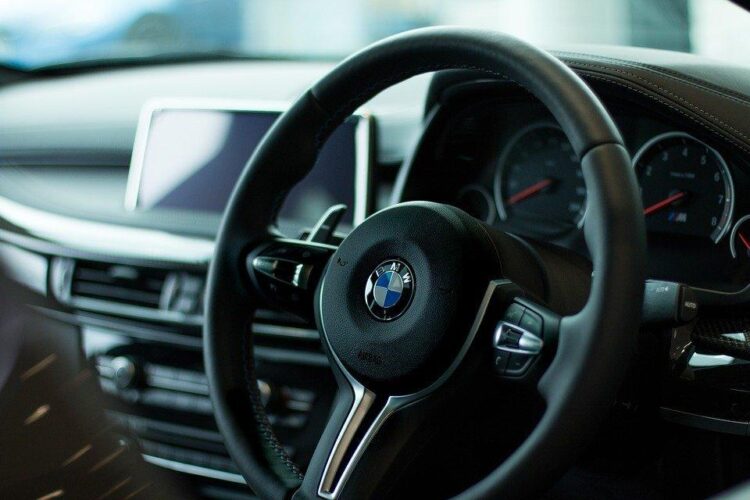When it comes to transportation, cars have been the mainstay for almost a hundred years. However, this form of transportation has not always been the mainstay.
If you lived in the past, particularly in the 1900s, you’ll notice that the streets don’t have cars. It was only filled with buggies and horses. These kinds of transportation were very commonplace, and they were made for unpaved roads.
A couple of years later, you will have a hard time finding the same buggies and horses. All of them have been replaced by cars.
After years of car technology that had only marginally evolved since the 20th century, professionals believe that we are now seeing an extremely rapid shift in the car industry.
30 to 40 years ago, the way vehicles were produced did not change much. However, things are drastically and quickly changing today. With companies such as Tesla, car technology has improved incredibly fast. These new types of cars are very futuristic, and they have space age type technology.
So, what should people expect from the cars of the future? Here are several things to know:
Table of Contents
Windshield Displays
One of the risks of driving a car is taking your eyes off the road to get information, such as speed and navigation.
This is where windshield displays come in. It is a heads-up display that projects images onto a car’s windshield. They are very effective at giving you split second information on maneuvering through the road,
With this technology, drivers can avoid looking away from the road since they can get all the information they need on their windshield. They may also show you key bits of information such as speed and the directions you use.
To achieve this technology, car manufacturers have to work with other companies, such as medical injection molding company Seaskymedical. Click here for more information
A Doctor In Your Vehicle

A lot of leading car manufacturers are working hard to create a technology that monitors the driver’s health from the inside of their car.
Some companies have already developed an electrocardiography reader that tracks heart function via sensors in the seat. These sensors don’t have to touch the driver’s skin to function.
Another technology that manufacturers are working on includes glucose monitoring for people with diabetes.
People with diabetes and heart diseases can monitor their health in their homes. With this technology, they can also do it from their car.
Personalized Dashboard
Car cabins in the future will incorporate infotainment, steering, pedals, and dashboard into a single console. In autonomous cars, drivers can do video calls while their vehicle is in self-driving mode.
To take it a step further, future cars will have a cabin that drivers can fully customize. This enables you to pick designs and themes for your interactive dashboard.
Manufacturers might also get rid of buttons in the future, as drivers utilize words and movements to give directions to their cars.
Your Vehicle As a Source of Power
Nowadays, car manufacturers are competing with each other to create more sustainable, cheaper, lighter, and longer-lasting batteries.
Their main goal is to improve the battery life of their vehicles to make the range of their cars much better. That is why they’re working with a ball valve Malaysia company.
Today, there are vehicles that you can drive for more than 300 miles without recharging. However, future vehicles will play a role in the holistic power supply of a country as well.
Whenever you arrive home and your car’s battery is still full, you can plug your car into your home to use that extra energy.
For instance, perhaps you can operate your lawnmower using the battery of your vehicle. Another good example is when you’re camping. You can utilize your car to power your lights during the night.
Get Rid Of Blind Spots
One of the biggest paradoxes of a car manufacturer is the pillars just behind the car’s front doors. These pillars provide strength in case of a collision and provide support for the roof.
Unfortunately, these pillars also limit the view of a driver of their surroundings. This adds an element of threat when it comes to evasive maneuvers and lane changes.
Fortunately, cars of the future can help get rid of blind spots by using a range of intelligent cameras and high-quality sensors.
Facial Recognition

One of the best ways to prevent car theft is biometry. With this technology, only those faces registered previously by the owner will be able to start the car or open its doors.
Aside from theft, facial recognition can also help prevent accidents. For those who don’t know, 80% of car crashes occur because of the driver being distracted or not paying attention.
State-of-the-art biometric technologies can keep track of the driver’s head movements, facial expressions, and eye blinking. Modern cars can use this data to alert the driver.
If the driver keeps ignoring the alerts, cars can be programmed to pull over and stop. This helps prevent the driver from driving distracted.
Furthermore, cars of the future can use the same technology to identify when the owner is approaching and automatically open the door for them.
Talk To Each Other To Avoid Collisions
Laser sensors and radar found around the car’s body can help send information so that your vehicle, as well as other cars on the road, can prepare for road and weather conditions.
Major car manufacturers are also developing V2V connectivity (vehicle-to-vehicle). This allows cars to communicate with each other and prevent collisions.
Some car manufacturers are also working with bucket manufacturers for other features of the vehicle. With this kind of technology, you will be able to prevent dangerous situations from happening.
Conclusion

While the feel and look of our vehicles have changed over the years, the way we drive them has not. However, major changes are coming.
In the next several years, the way people drive and use their cars will drastically shift.

